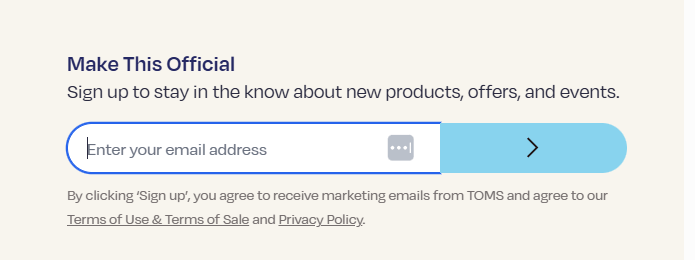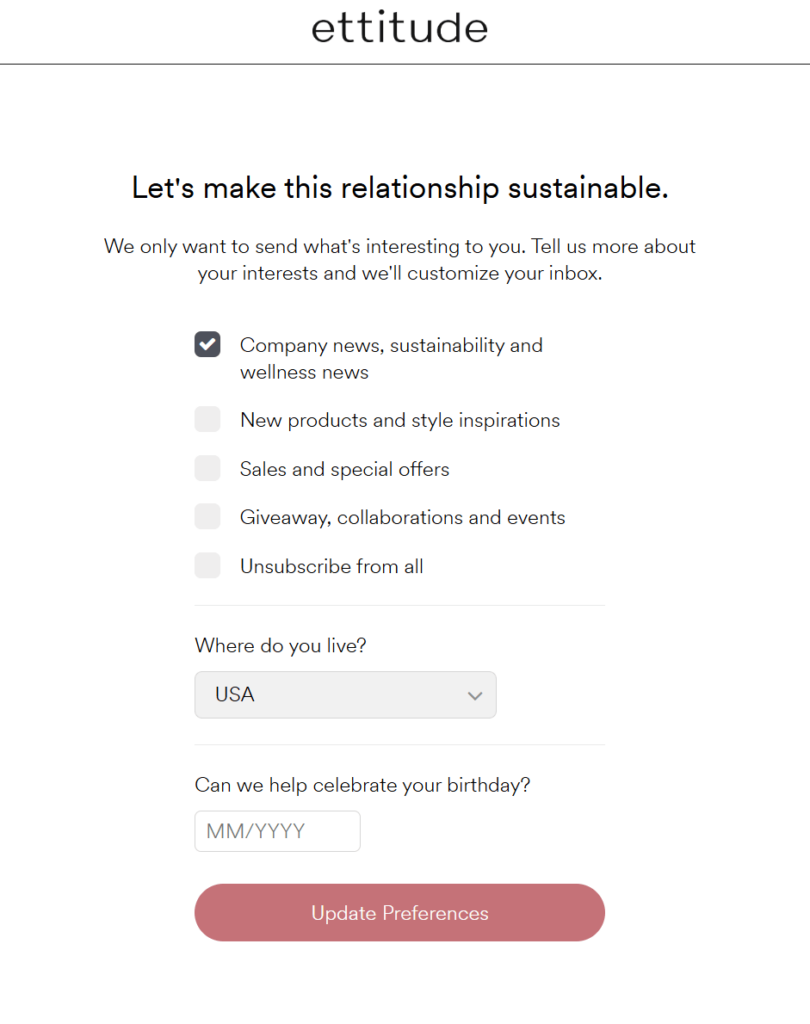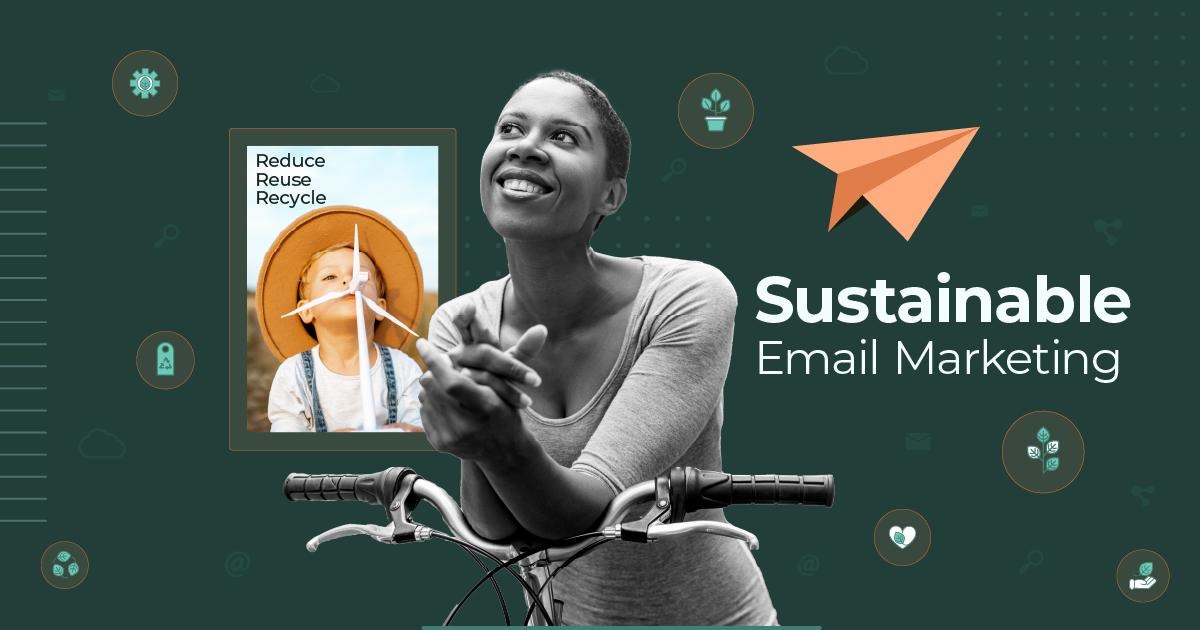
Is Your Email Marketing Ethical Marketing? Spot the Red Flags
Let’s say a customer recently browsed two skincare brands. One follows up with a pushy discount and generic copy. The other sends a short, thoughtful message explaining how their refill program helps reduce packaging waste and supports a more sustainable routine.
Both are marketing. But only one reflects real values in action. That’s the difference ethical marketing makes.
Get from theory to action
Use Moosend’s advanced features to design ethical email marketing campaigns.
Start freeWhat is Ethical Marketing?
Ethical marketing defines how a business promotes its products or services in a transparent, honest, fair, and respectful way. It goes beyond the customer, reflecting how a business treats its employees and partners, and how it contributes to the community as part of its broader social responsibility.
An ethical business commits to honest and clear communication. No overpromising or misleading claims, just delivering real value. It also means respecting your audience’s time, protecting their data, and avoiding manipulative tactics that prioritize short-term gains over long-term trust.
Ask yourself: if your brand were a person, would people trust it? Would they want to have a conversation with it? Fairness and humanity are central. Ethical marketing ensures no one is left out. Offers are inclusive, messaging is accessible, and everyone is treated with equal respect regardless of background or identity.
From market research to social media posts, every touchpoint should reflect your brand’s core values and ethical stance. That’s where real trust begins and where it evolves into lasting impact and brand advocacy.
What Makes Email Marketing Ethical or Unethical
Email marketing isn’t just a conversion tool. It reflects what your brand stands for and communicates your ethical standards across multiple touchpoints, from confirmation emails to promotional campaigns.
Most marketers start building their email strategies with the best intentions. But let’s be honest, the line between persuasive and pushy can get blurry fast. And when your content starts to feel more like pressure than value, it’s only a matter of time before it’s labeled unethical.
Take email automation, for example. With the right copy and timing, it can feel like a helpful nudge. But what if someone gets bombarded with reminders and product suggestions just because they left something in their cart on a Monday?
That’s not support but noise. The strategy might be the same, but how it’s executed determines whether it builds trust or drives people away.
1. Consent
To start mailing customers and prospects, you first need their informed opt-in. A sign-up isn’t just a click, but a decision to trust your brand. That trust should be met with clear communication, respect, and responsible use of their inbox.
To strengthen that permission, set up a double opt-in process. This gives people a moment to confirm their interest, helps ensure you’re reaching the right inboxes, and reduces the risk of spam complaints.
Do you want to go a step further? Share a preference center where subscribers can choose the type of content they want to receive.
On the flip side, avoid practices that can be considered unethical and hurt trust, such as preselected options or hidden checkboxes. And keep in mind that emailing new customers beyond transactional messages without their consent can raise serious ethical issues.
Check out how TOMS uses a clear footnote in their signup form to explain how email addresses will be used. It also links directly to their Terms of Use and Privacy Policy, making the process more transparent:

What happens if subscribers want to opt out? Make it easy for them. Placing unsubscribe buttons in your email footers isn’t just an ethical marketing practice. It also helps with deliverability and keeps your email list healthy.
2. Transparency
Another element that influences whether subscribers see you as ethical is your honesty and transparency. Often, you can clear the air through your content by demonstrating your business ethics and good intentions upfront.
Use a consistent sender name that has your company name to establish credibility and trust. To stay top of mind as an ethical brand, clearly state the email’s purpose early on.
Write a subject line that reflects the email’s true intent. Avoid overusing urgency just to boost open rates, especially when time-sensitivity isn’t genuine. Reserve urgency for actual limited-time offers and always follow through on your promises. That includes sharing terms and conditions and clearly stating expiration dates.
If you’re sending automated emails—like welcome or re-engagement messages—add a quick note explaining why the recipient is receiving it. For example, in product recommendation emails, say something like, “We’re recommending these products based on your recent views.”
Remember that some customers are wary of scarcity and urgency tactics, so use them sparingly and thoughtfully. Compare: “limited-stock items” vs. “3 items left: Hurry up!” The first feels honest, but the second can seem manipulative.
If you’re an eco-friendly brand, show your initiatives across your brand assets, including emails. Add a badge you’ve earned or link to a dedicated page on your site. Without proof, subscribers may suspect greenwashing. The same goes for other social responsibility efforts like volunteering or supporting social causes.
Take this Earth Month sale by Pact, for example. They conveyed their values and added urgency without sounding pushy. They also highlighted ethical initiatives in the footer, such as fair trade.
Subject line: Sitewide Sale: final hours ⏰

3. Data privacy
Consumers are becoming increasingly conscious of the data they share with businesses and are more skilled at spotting violations. Respecting consumer privacy starts with consent, but it doesn’t stop there. You can follow a set of ethical marketing practices to help your audience feel more secure and respected.
First, create a detailed privacy document and make it easily accessible in key places like email footers, sign-up forms, and FAQs. During the sign-up process, only collect essential data. Then, offer a preference center where subscribers can share more details if they want to, and explain how you’ll use them. Also, let them know that they’ll be able to delete their data at any time.
Here’s ettitude’s email preferences to get a better grasp:

Sticking to compliance policies such as GDPR and CCPA is non-negotiable. Make this information easy to find and understand. If these practices aren’t followed, it’s not just a compliance issue, but an ethical one.
And finally, even if your intentions are good, misusing sensitive data—or worse, selling it—can seriously damage your brand’s credibility.
4. Value
When subscribers open your emails, they expect to see valuable and relevant content. While a simple offer can be intriguing, mentioning the benefits a customer will get from a product is more practical and genuine. Educational emails work the same way: when they teach something useful, they build trust.
To set the right expectations, ensure your content aligns with your subscribers’ interests. If you’re introducing something new, explanations and certain types of social proof, such as case studies and testimonials, can be reassuring.
On the other hand, irrelevant or overly frequent emails can feel exhausting. And if your content is exclusively AI-generated without a human touch, it can come across as impersonal, hurting brand loyalty down the line.
This becomes especially important when you’re using automation. Just because a message is automated doesn’t mean it should feel like one. To deliver real value, every email, scheduled or triggered, still needs to sound intentional and relevant.
So, what about email automation? Is it always valuable for the subscriber, or is it just a time-saver for marketers? With the right approach, it can be both. And you need to be flexible with your digital marketing tactics and willing to adapt as your audience evolves.
Revisit your automation strategy regularly to ensure that your workflows are relevant and sustainable. From the customer’s perspective, an ethical business doesn’t spam subscribers with unnecessary content. Dive into your data and find the frequency that feels just right.
Check out this promotional email marketing campaign by Bite. They invited subscribers to explore their products by showcasing their sustainable practices and environmental impact. This is a great example of leading with values and inviting like-minded people to join the journey.
Subject line: Certified Good

Tip: Ask subscribers if they found your email helpful and encourage them to update their preferences if their interests shift. It’s a small gesture that shows you’re listening.
5. Personalization
Segmentation and dynamic content let marketers send targeted messages based on real-time or existing customer data. But when it comes to personalization, can you go too far?
Absolutely. Over-personalization is a real issue. For example, sending personalized product recommendations based on past purchases or replenishment emails can help customers find what they need faster and encourage repeat purchases. But firing off a message at the moment someone browses a product on your website is usually a bad idea.
While intrusive timing can feel unethical, behavioral retargeting is not inherently bad but needs to be used thoughtfully. With the right timing and tone, it can help visitors and customers make important decisions throughout their journey with your brand.
Jumping to conclusions based on inferred data can also cross ethical lines. For example, referencing sensitive topics such as life events or health concerns can feel exploitative.
Let’s say someone browses sleep supplements. Here’s how to get the tone right to make a positive impact:
- Ethical: “Looking for stress or sleep supplements? Here are a few calming options our customers love.”
- Over-personalized: “We noticed you’ve been browsing sleep aid supplements late at night. Need any help?”
If you want to take a more respectful approach, consider using micro-personalization. It allows you to tailor messages based on general interest or intent, like product categories, without referencing overly specific behaviors. The result will feel helpful, not invasive.
A great example comes from Natalist. The brand shared a quiz to help customers find what suits them, without making assumptions about where they are in their customer journey. That’s thoughtful personalization in action.
Subject line: Guess what? It’s quiz time!

All in all, personalization should feel helpful, not creepy. The goal is to enhance the user experience, not to make people wonder how much you know about them.
Ethical Email Marketing Best Practices Checklist
Here are some key takeaways to make your email marketing efforts more ethical and boost customer loyalty:
- Get informed consent: Use a secure, transparent opt-in process. Avoid manipulative tactics like preselected checkboxes or acquiring email addresses from third parties.
- Respect data privacy: Collect only the data you truly need. Demonstrate your commitment to privacy regulations through respectful marketing practices.
- Make unsubscribing easy: Let subscribers opt out with a single click. Encourage them to update their preferences if they’re open to giving your content another shot.
- Communicate clearly: Always deliver what you promise. Be upfront about offers, timelines, and what subscribers can expect.
- Avoid over-personalization: Don’t infer sensitive details from behavior. Stick to the information subscribers willingly share and use it thoughtfully.
- Provide real value: Focus on what your audience can genuinely gain. Skip the hype and highlight the benefits that matter instead.
- Use urgency and scarcity wisely: Don’t manufacture pressure. Reserve urgency for real deadlines or limited stock, and always be upfront about it.
- Audit and test regularly: Keep your strategy fresh and compliant. Use important email metrics to understand what resonates and adjust your approach accordingly.
Lead with Empathy and Transparency
Ethical marketing is about intention, not perfection. There will be losses along the way, but ensure that your messages reflect your values to enter every inbox with grace and respect.
So, take a pause and ask yourselves: Are we being helpful, or just persuasive? Are we building trust, or just chasing clicks?
And remember, leading with empathy and transparency doesn’t compromise performance. It’s all about building trust with your customers, the one and only asset that will keep your business going.
FAQs
Let’s explore the answers to frequently asked questions about our topic:
1. What are the principles of ethical marketing?
Ethical marketing is defined by honesty, transparency, responsibility, and respect for consumers, leading to stronger and more trustworthy relationships with customers and prospects.
2. Why is ethical marketing important?
Ethical marketing demonstrates a company’s dedication to fair and transparent actions, leading to enhanced brand reputation, consumer trust, and customer loyalty.
3. What are the ethical considerations for using AI marketing?
The top ethical considerations of using AI in your marketing efforts include data privacy, biases, over-personalization, and manipulative marketing tactics, such as artificial scarcity to boost sales.
4. What are some ethical issues in marketing?
Some common ethical marketing issues include deceptive marketing, privacy violations, price gouging, artificial scarcity, and unfair targeting of vulnerable populations.




 Published by
Published by

